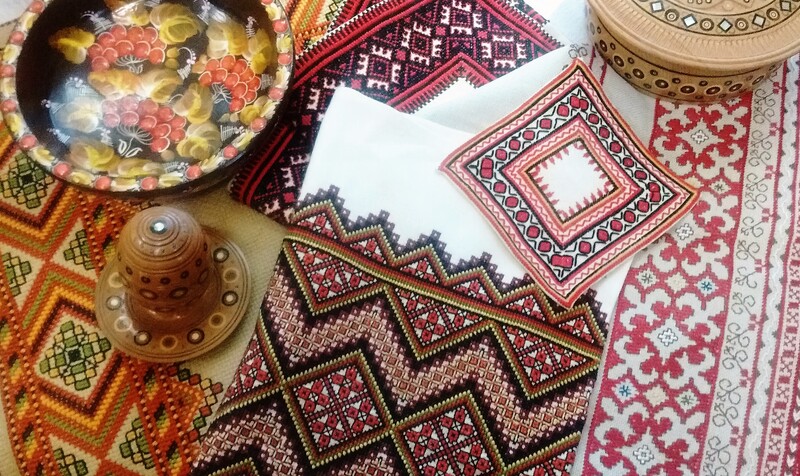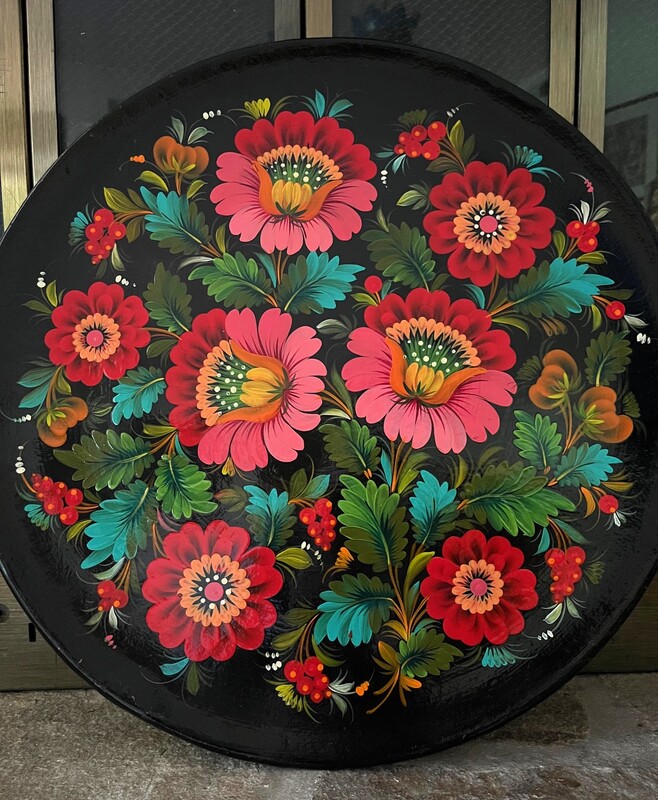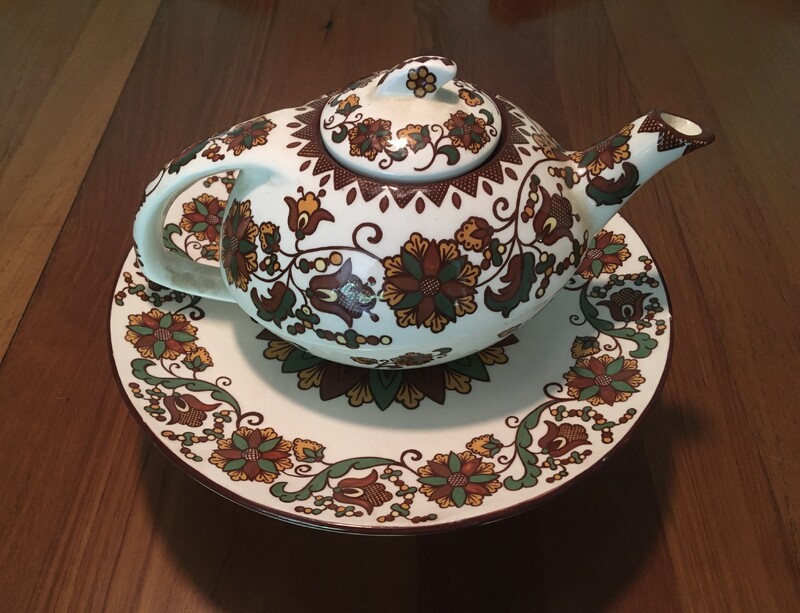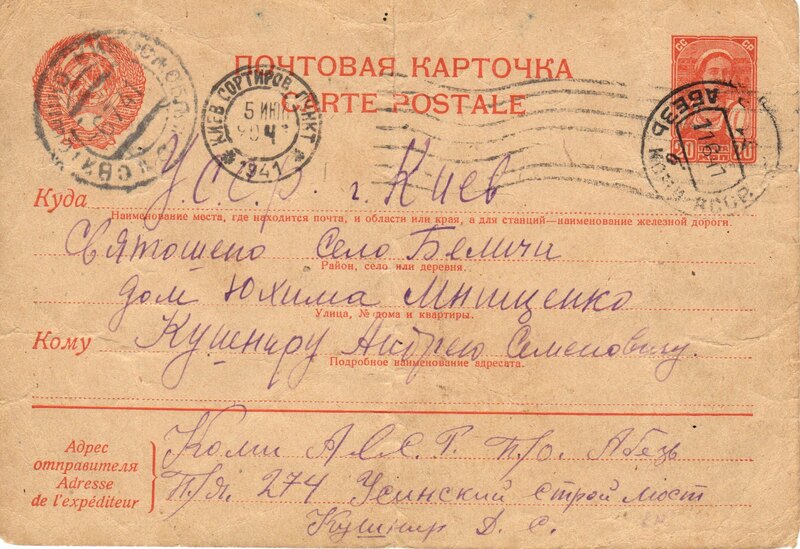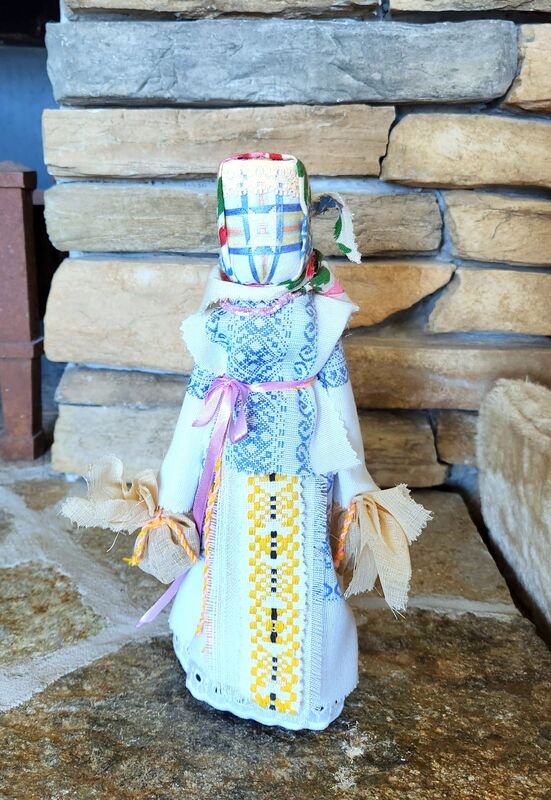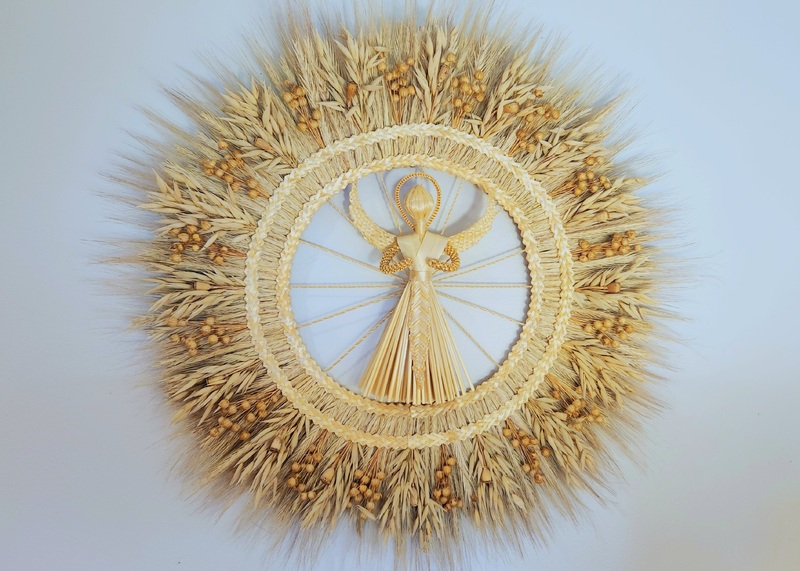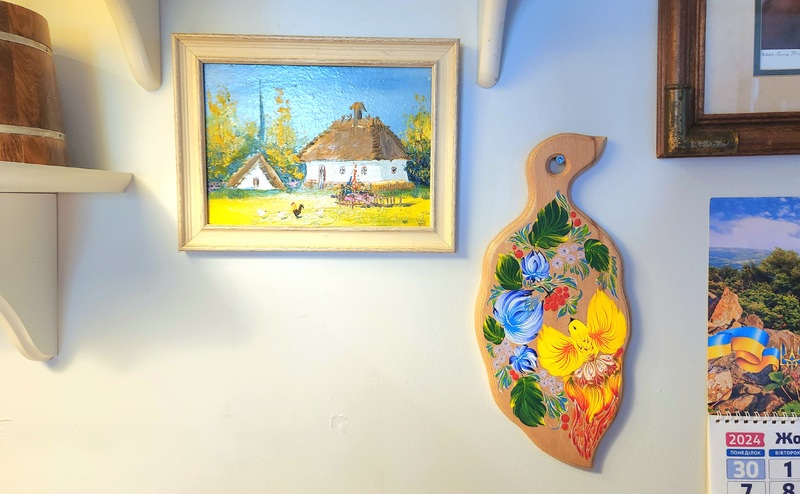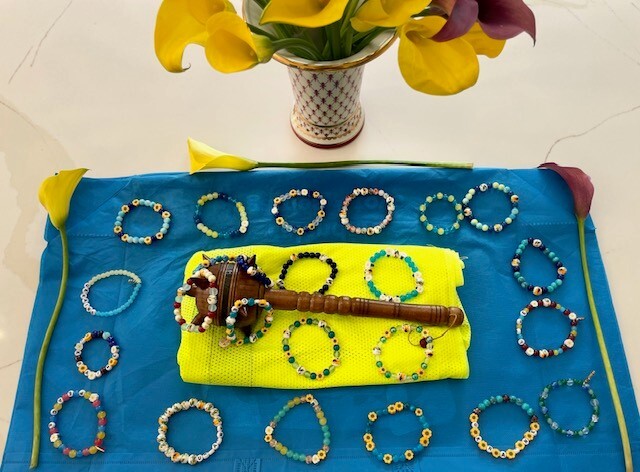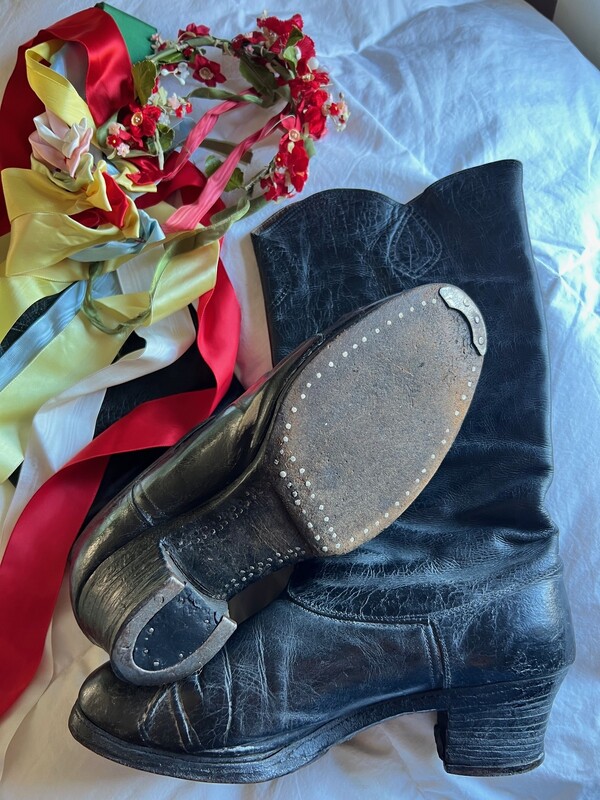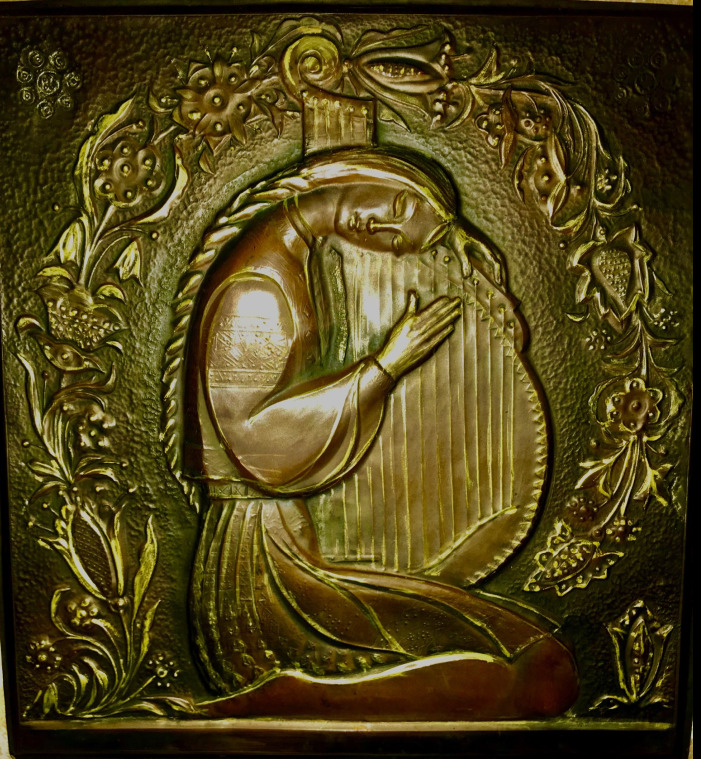Cultural heritage becomes especially precious when an unrelenting adversary threatens to wipe it out. Since Russia invaded Ukraine on February 24, 2022, Ukrainian-Americans have clung fiercely to their shared language, history and culture. This exhibition aims to showcase the joy and pride of Maryland residents with Ukrainian roots. The art, folk art and artifacts displayed in this online space represent cherished links to rich, beloved common traditions.
We invite you to share a few of your most cherished items that showcase and celebrate Ukrainian culture and heritage. Images will be continuously added to this exhibit highlighting family-collected art, artifacts, and treasures.
- Please email images to curator Sam Bessen at inthestacks@jhu.edu
- Choose 1-4 photos of Ukrainian art or artifacts that occupy a place of personal importance to you and your family.
- Please include a title and brief description for each image: What is it? Where did it originate? Why is it important to you or your family?
- By providing images, you give permission for their use in the above online exhibition. Please contact Sam Bessen at inthestacks@jhu.edu for take-down requests
Alexandra Hursky: "My grandmother, Tatiana, brought almost nothing with her from Ukraine when she entered the U.S. as a WWII refugee. She was a skilled and talented needlework artist, and throughout her long life, found relaxation and fulfillment creating beautiful, embroidered pieces. They now rank high among my most treasured possessions."
Alexandra Hursky: "Although born in the Poltava region, my grandmother embraced learning embroidery techniques and specialized needlework from all areas of Ukraine. She would put her own special spin on the designs and patterns. Traditional Ukrainian embroidery often includes floral or geometric shapes: squares symbolize harmony and order."
Alexandra Hursky: "This large, wooden plate from my parents' collection of Ukrainian artworks is decorated in the Petrykivka style. Named for a village in the Dnipropetrovsk region, this unique style of painting was recognized in 2013 as a UNESCO Intangible Cultural Heritage. Its patterns are traditionally dominated by plant forms, especially flowers."
Alexandra Hursky: "The Ukrainian community in Syracuse was privileged to count ceramic artist, Falyna Wojtowycz, among its members. A good friend of my mother's, both were members of the Ukrainian National Women's League of America. Her designs were based on Hutsul and Trypillian styles and are now displayed in our MD home."
Helen Barnatny: "This portrait of my mother, dressed in a traditional Ukrainian outfit, was painted from a photograph taken in Odessa where Glafira was a student studying opera and theatre. In the painting, the face from the photo of the little girl on my mother’s back was changed by the artist to my face, Glafira’s daughter!"
Andrei Kushnir: "The attached two images are the front and back of a postcard received by the family of my late father (Wasyl Kushnir) from my father's uncle Danylo Semenovych Kushnir. Danylo had been arrested for false reasons of counterrevolutionary activities by the Moscow led USSR security service and sentenced to labor camps. He was tortured, and then sent by train to a labor camp in Siberia to build the prisoners' own housing barracks and then build fortifications against the Russian enemies, the Japanese. He survived this ordeal, but then, with the other survivors, was forced to take apart the barracks, load them onto a train, and they were transported to the Komi region, in the Arctic Circle, where they were forced to rebuild the barracks, and then build a bridge on the Yenisey River.
Many of the prisoners died of hunger and deprivation, and Danylo suffered from scurvy and sickness when he sent this postcard home to his family, received in June, 1941. It is addressed to his brother, Andrei Semenovych Kushnir, my father's father. Details of Daylo's imprisonment and Kushnir family history are recounted in Epic Journey, The Life and Times of Wasyl Kushnir by Andrei Kushnir (myself)."
Anna Glezina: " My name is Anna Glezina, I am Ukrainian American. I came to the US in 2013 from Mariupol, Ukraine. I currently reside in Anne Arundel county, and serve in the US Army. I cherish my Ukrainian roots and gladly contribute into the local Ukrainian community.
Last year, I started a Ukrainian book club in DMV area. It is successfully functioning and is helping local Ukrainian speakers to link up with the Ukrainian literature. I am excited to offer pictures of some of my Ukrainian artifacts for this exhibit, and only wish I could submit more entries.
Glory to Ukraine!
Anna Glezina: "Made by a Ukrainian artisan Liubov Litovchenko."
Anna Glezina: "Painting of a Ukrainian village home by a Ukrainian artist, musician and author Ivan Donych and a handpainted board by a Ukrainian artist Olena Shvager. This is an example of Petrykobka art. Her contacts and more art here."
Anna Glezina: "Me (Anna Glezina) and my mom (Olena Kravchenko) wearing traditional Ukrainian embroidered blouses "vyshyvánka". In this picture I am also wearing a traditional flower crown called "vinók".
We were both born in Mariupol, Ukraine."
Taras Dyakiv: "Our family is wearing traditional Ukrainian outfit that came from Western Ukraine and was hand made by people who live in Karpathian mountains.
The shirt that I am wearing was made in 1978 and is made only by hands.
A Bulava is a traditional Ukrainian wooden mace, often used as a symbol of power and authority this piece was made in Ukraine in 1963 and passed on from my grandfather who live in a little city called Striy.
It's a beautifully carved and handcrafted item, often used as a decorative piece or a gift."
Suzanne Kingsbury: "The boots in this photo were worn by my 20 year mother when she left her home in western Ukraine I in 1944. They brought her to Vienna, and made it through life in a DP camp, an ocean voyage to New York and eventually the DC area."
Suzanne Kingsbury: "My mother embroidered this pillow, along with many other items (including a formal tablecloth with placemats and napkins for 12). She embroidered most of life here in the U.S. as a way to connect, remember and self soothe. Slava Ukraini."
Larisa Pastuchiv: "The bandura --the Ukrainian national instrument -- has played an important part throughout my entire life. I began learning to play the bandura at age 7 when my Father, Rt-Rev Serhij Kindzerjavyj-Pastukhiv, established the School of Bandura on Long Island, NY. Years later, I started teaching bandura at the lower Manhattan branch of this school, and continue teaching to this day.
The bandura is an open stringed instrument with 60 strings and a 5 octave range, allowing for its uniquely characteristic sound. Its reverberating overtones through the body of the wooden instrument can leave a haunting effect.
My formal studies in music theory and composition allowed me to have a more robust understanding of the bandura's unique musical capabilities and contributions, and to create original bandura compositions and arrangements of familiar folk pieces.
For me, the lovely, unique sound of bandura is forever embedded as part of my heritage and background. This metal wall plaque, a gift from my late husband, David who appreciated my love for the bandura, signifies both the depth of my devotion to bandura and the indelible impression it has had on my life. "

